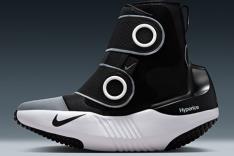Normalized Power
Normalized power is an attempt to do this by assigning a greater weight to higher watts and thus capturing the high metabolic cost of higher watts, especially spikes in wattage as you surge up a hill, etc. In other words, Normalized Power is how tired you made yourself while producing your average watts for the ride.
Variability Index
From these two concepts, Average Power (the physics of the work you produce) and Normalized Power (the effect that work has on your body), we can extract two fundamental pacing concepts for the Ironman bike:
- Produce the average watts that are right for you, framed by the requirement to run a marathon off the bike.
- Do so with a style of riding that leaves you the least tired.
That is, the difference between your average watts and normalized watts is valuable as a tool to determine how good a job you did of following these fundamentals and we can measure that with (yet) another power term:
Variability Index (VI) = Normalized Power (Pnorm) divided by Average Power (Pavg).
For example: Billy and Timmy are twins on identical bikes riding side by side for 112 miles. They finish with the same bike split and have therefore produced identical average power of 200w. However, when we look at their Normalized Power (Pnorm) and VI, we see:
- Billy: Pnorm = 210w; VI = 210w/200w = 1.05
- Timmy: Pnorm = 230w; VI = 230w/200w = 1.15
What we see here is that while our twins both produced the same average watts, and therefore identical bike splits, Timmy's style of riding was metabolically more costly. He is more tired than Billy when they exit T2 and start the run. This high VI will have bad consequences on the run, especially a long, challenging run like a marathon after a 112-mile bike ride!
More: 4 Core Exercises to Boost Cycling Power
How to Apply This to Your Strategy
The best, set-up-the-marathon-correctly manner of executing the Ironman bike is to ride steady, with very few or small variations of power:
- We are not "powering up hills." Instead we give it a "little bit" of extra gas on a hill but the knowledgeable power athlete always knows exactly what this "little bit" should be and IS, right now.
- We limit coasting or periods of coming off the gas, with the goal of conserving our momentum at every opportunity.
More: How to Ensure a Great Ironman Bike Leg
 Search for your next Ironman triathlon.
Search for your next Ironman triathlon.
- 2
- of
- 2
About the Author









Discuss This Article